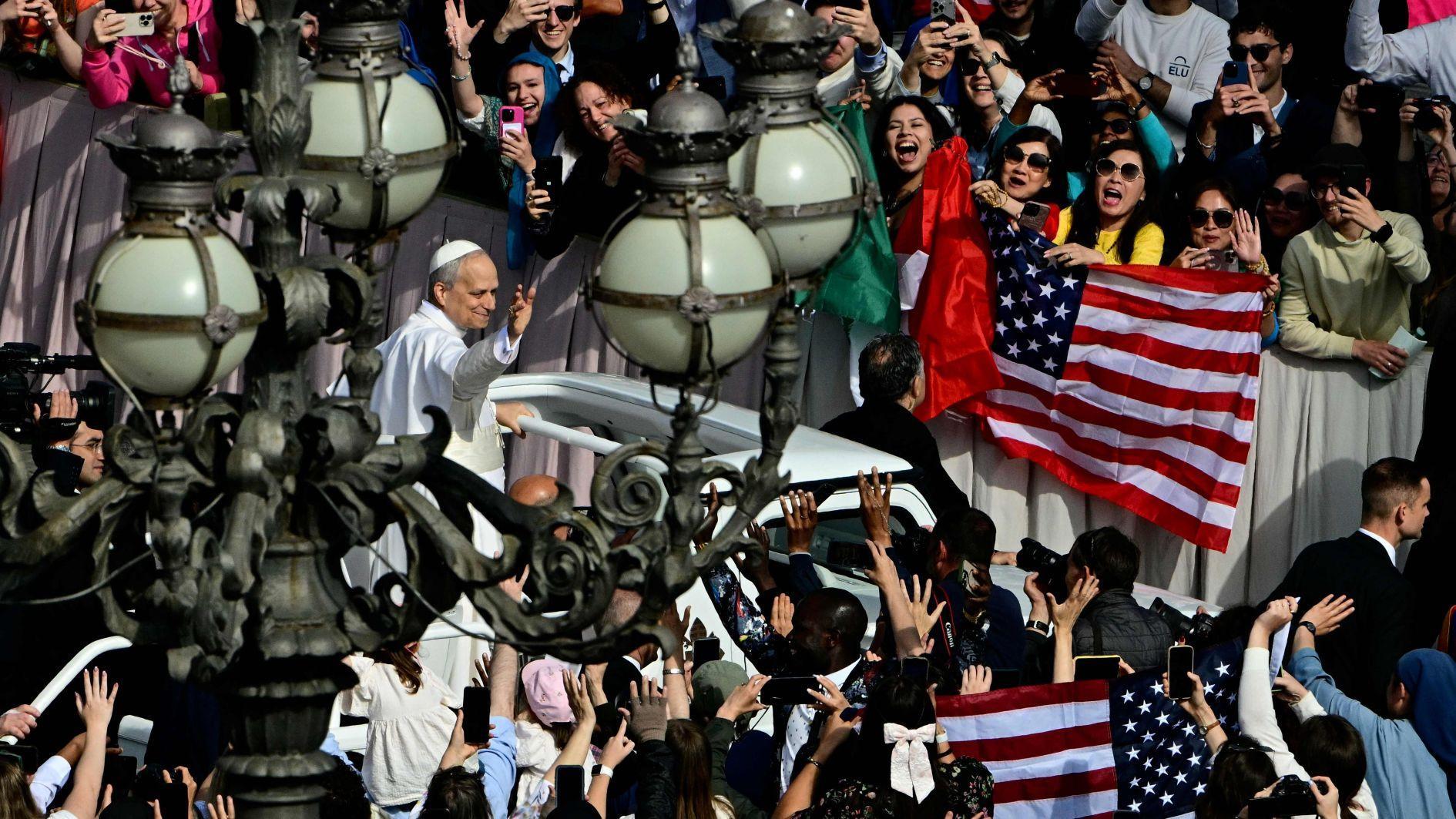
Pope Leo XIV officially opened his pontificate as history’s first American pope on Sunday, presiding over an inaugural Mass in St. Peter’s Square before tens of thousands of people, presidents, patriarchs and princes in a ceremony that blended ancient ritual, evocative symbols and a nod to modern-day celebrity.
Leo launched the celebration by taking his first popemobile tour through the piazza, a rite of passage that has become synonymous with the papacy’s global reach and mediatic draw, used at home and abroad to bring popes close to their flock. The 69-year-old Augustinian missionary smiled and waved from the back of the truck, but didn't appear to stop to kiss babies.
Security was tight as civil protection crews in neon uniforms funneled pilgrims into quadrants in the piazza and up and down the boulevard that leads to it.
U.S. Vice President JD Vance, one of the last foreign officials to see Pope Francis before he died, paid his respects at the Argentine pope's tomb upon arriving in Rome late May 17 and headed the U.S. delegation honoring the Chicago-born Leo.
After the public tour in the square, Leo went into the basilica to pray at the tomb of St. Peter, considered to be the first pope, under the basilica’s main altar and then processed out into the piazza for the Mass.
Strict diplomatic protocol dictated the seating arrangements, with both the United States and Peru getting front-row seats thanks to Leo’s dual citizenship. Vance, a Catholic convert, was joined by U.S. Secretary of State Marco Rubio.
Peruvian President Dina Boluarte was one of around a dozen heads of state attending, as well as Ukrainian President Volodymyr Zelensky. Russia was represented by the Culture Minister Olga Liubimova.
Diplomatic protocol also dictated the dress code: While most wore black, the handful of Catholic queens and princesses, Charlene of Monaco and Letizia of Spain among others, wore white in a special privilege allowed them. Three dozen of the world’s other Christian churches sent their own delegations, headed by patriarchs, reverends, ministers and metropolitans, while the Jewish community had a 13-member delegation, half of them rabbis.